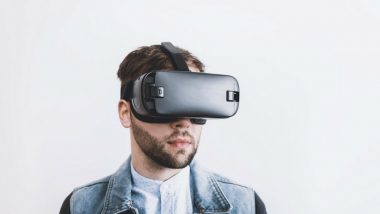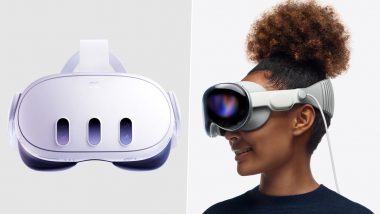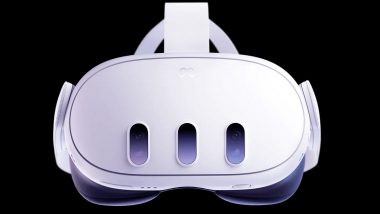Here’s a piece of good news for all those of you who are afraid of heights. A specialised group of psychologists and software experts have found out that your acrophobia can be conquered with VR or virtual reality. The Oxford researchers published their findings in The Lancet Psychiatry where the team used VR-based treatment to reduce the fear of heights in people who have lived with their phobia for decades.
The lead author of the study Daniel Freeman revealed that immersive VR therapies do not require therapists and can give people access to psychological interventions. Around 100 people who are clinically diagnosed with acrophobia were used for the study. They underwent a VR treatment with six 30-minute sessions, each involving various simulated experiences, like rescuing a cat stuck on a tree or walking on a platform over a dizzying height. The participants who completed the treatment said that they were benefitted by it and felt less anxious when they had to look down from a great height.
Virtual Reality As a Therapeutic Tool
The wonders of virtual reality go beyond just improving your movie experience. People who struggle with physical, emotional and psychological problems often find relief through VR-based therapy. Patients mostly use it to overcome fears, anxiety issues, PTSD and addictions. It makes them face their fears safely in a virtual environment, acclimatising them to their phobias in the long run. Here are some of the uses of VR in the medical world.
1 Helping in Exposure Therapy
Through this therapy, the patients are basically “exposed” to their fears in a virtual set up. Exposure therapy helps in desensitising the individual to their fears in privacy, saving them from embarrassment in public. Specific phobias such as fear of flying, of heights, of darkness and public speaking are tackled used exposure therapy.
2 Reducing Pain
Virtual reality is also used to help patients with chronic pain alleviate their discomfort. A VR game called SnowWorld developed by the University of Washington involves a game where the patients can virtually throw snowballs at penguins and listen to songs by Paul Simon. The game helps in overwhelming the pain pathways of the brain, lessening the sensation. A 2011 study showed that SnowWorld was better than morphine in lessening the pain in soldiers who struggled with burn injuries.
3 Improving Social Skills in Autism
Virtual reality is also used in autistic kids by helping them develop their social skills. It puts them in virtual setups like interviews and blind dates. Studies show that it increased activity on the part of their brain related to social skills.
4 Treating Phantom Limb Pain
A curious phenomenon called phantom limb pain affects amputees who have lost a limb. Strangely, the pain is felt in parts that have been amputated. To treat this virtual pain, physicians use VR. The patients are made to play a game where they use virtual limbs to perform tasks. It gives them control over the painful virtual limb.
5 Complicated Operations
VR helps not only the patients but also the surgeons. In a simulated environment, surgeons can practice complicated surgeries without the use of cadavers or posing any danger to the patients.
Virtual reality has opened up avenues in the medical field, helping patients and professionals in multiple ways. It has a broad spectrum use in medicine, assisting in diagnosing, treating and counselling. The day is not far away when VR will be an indispensable tool in medicine.
(The above story first appeared on LatestLY on Jul 13, 2018 11:15 AM IST. For more news and updates on politics, world, sports, entertainment and lifestyle, log on to our website latestly.com).













 Quickly
Quickly






















